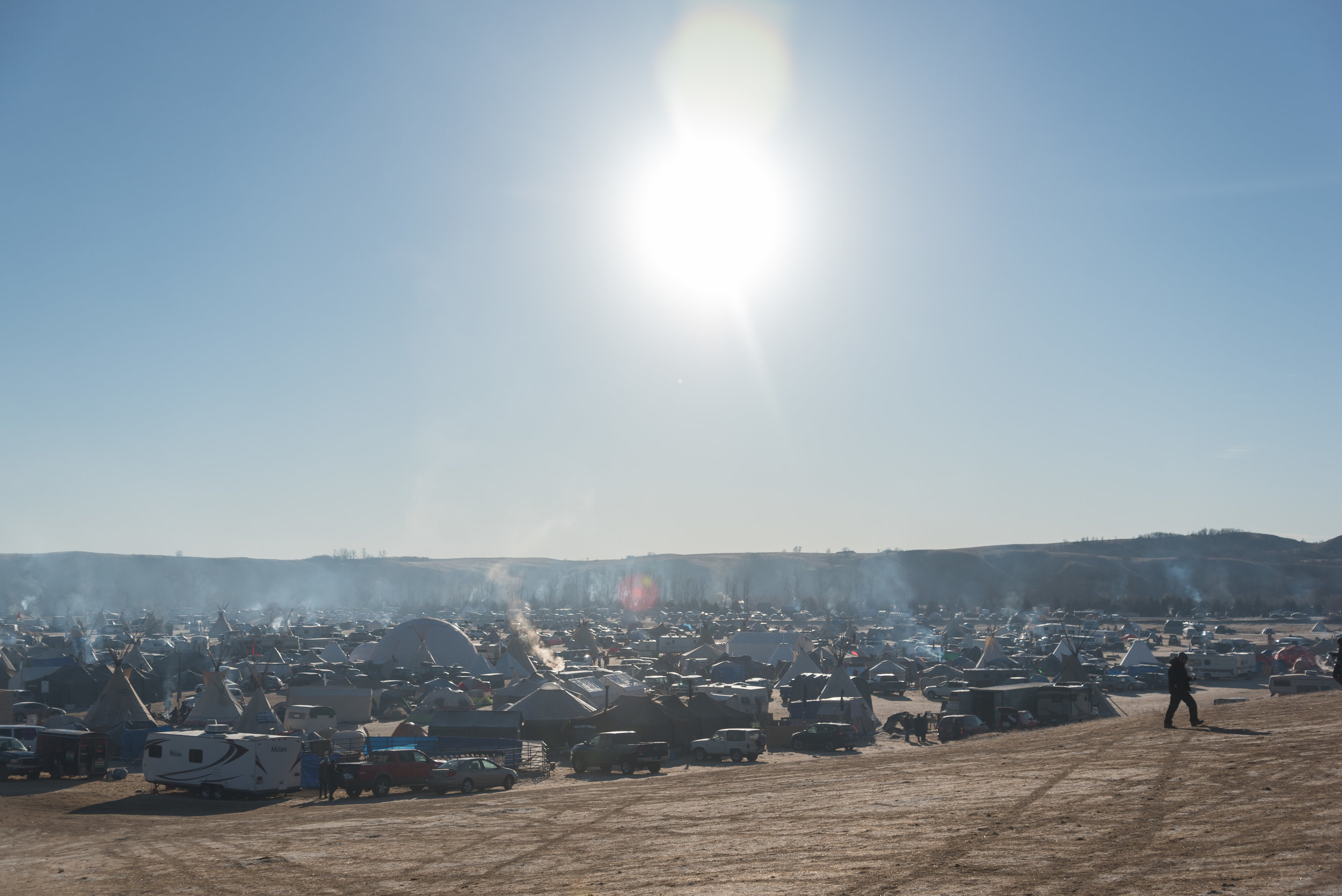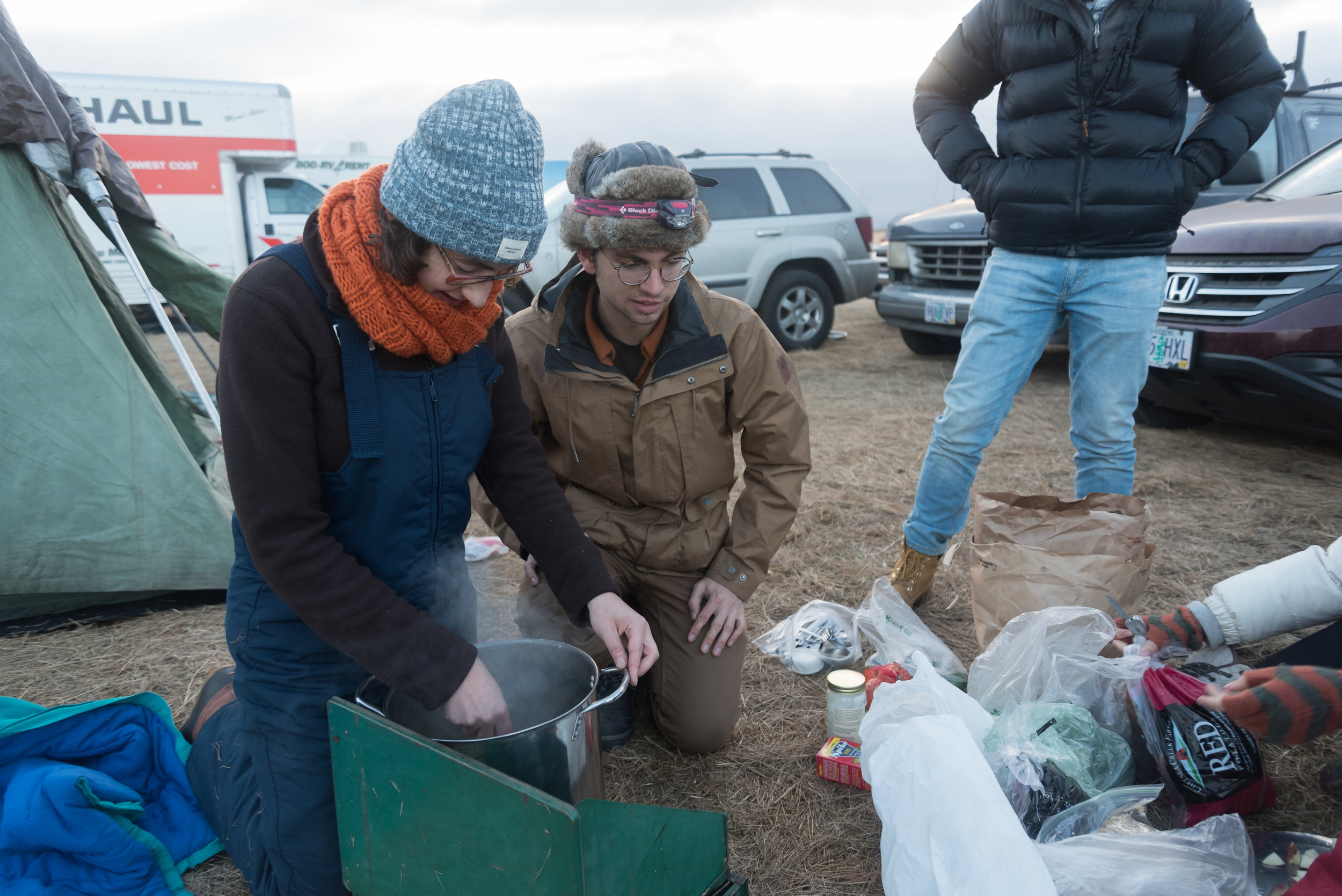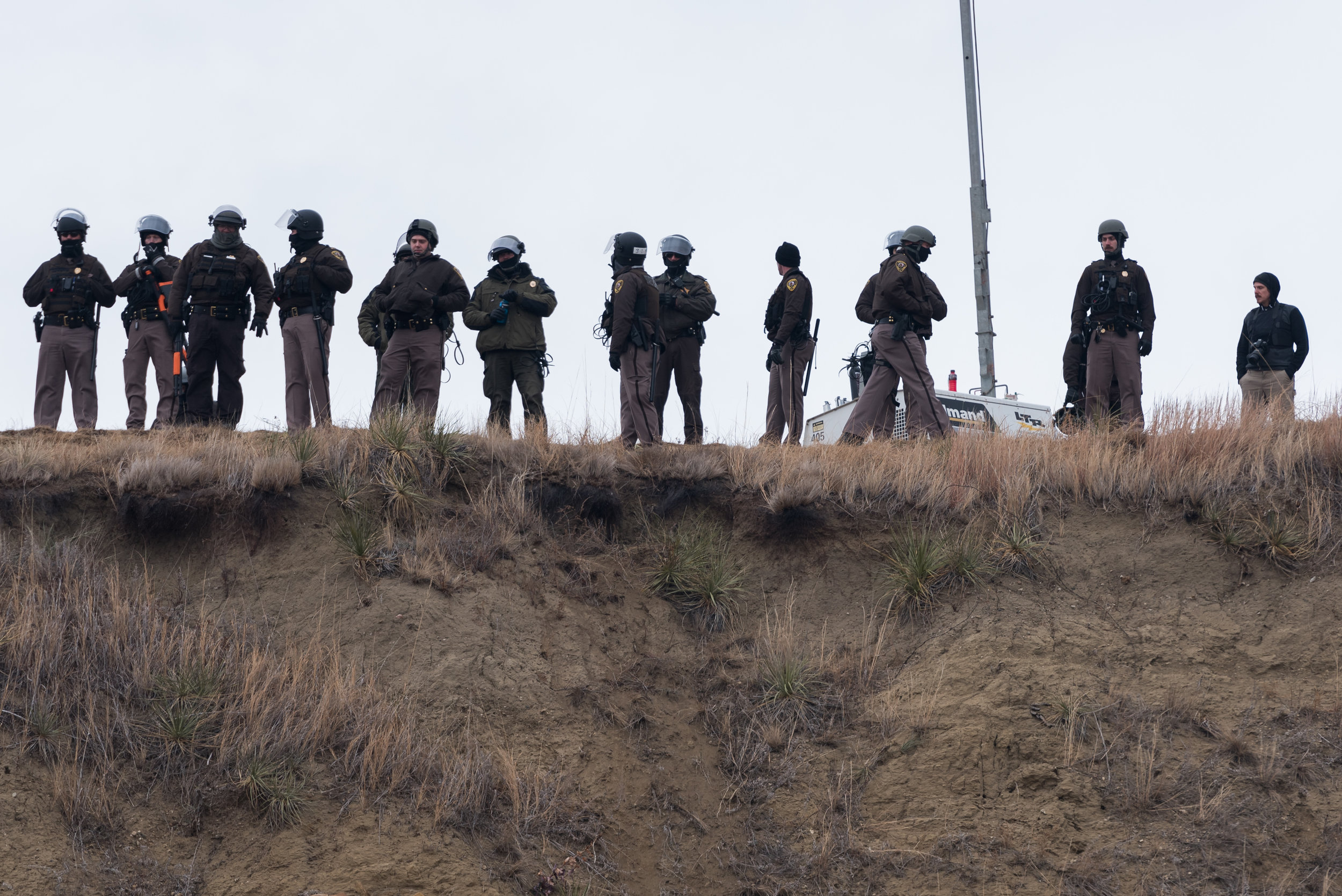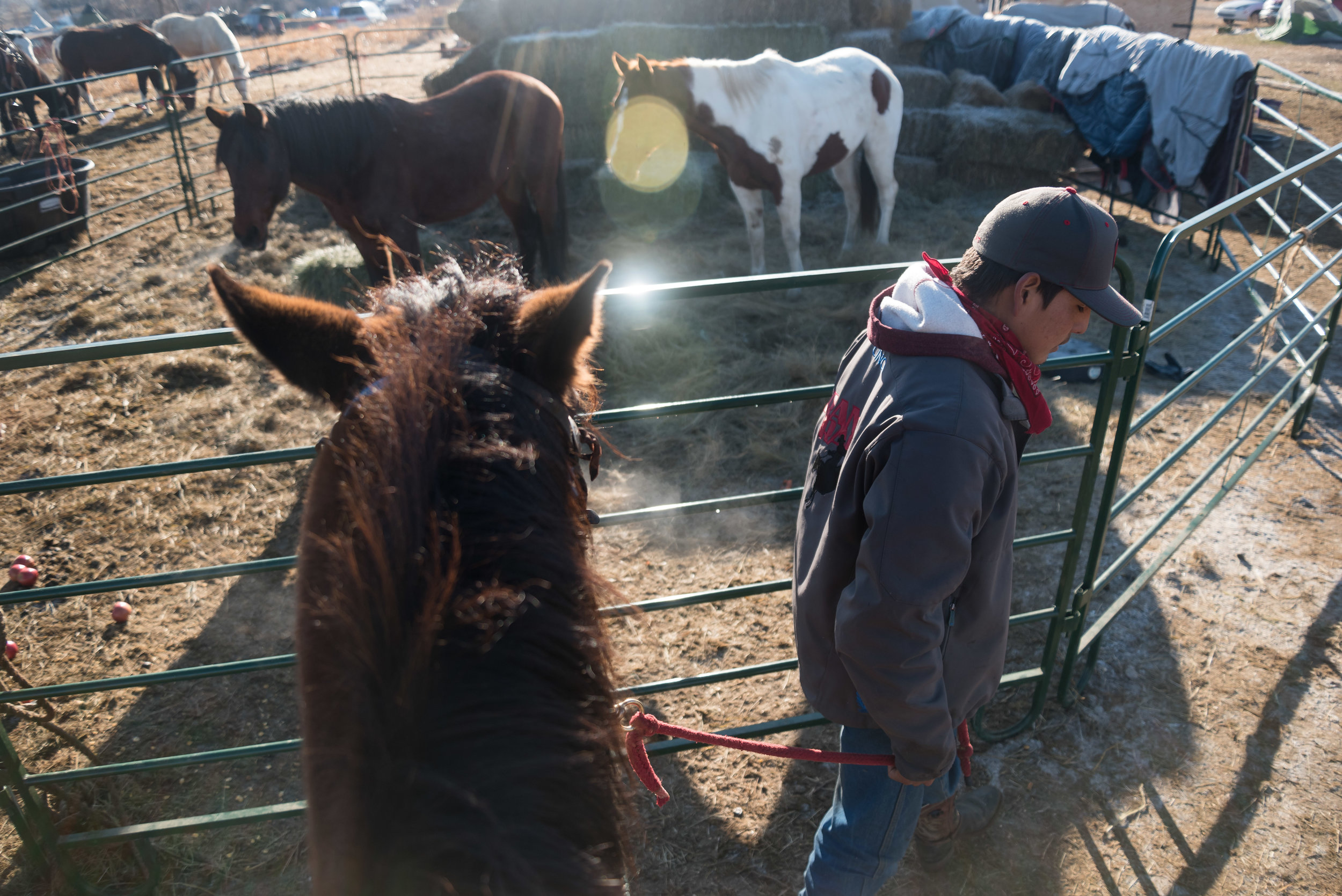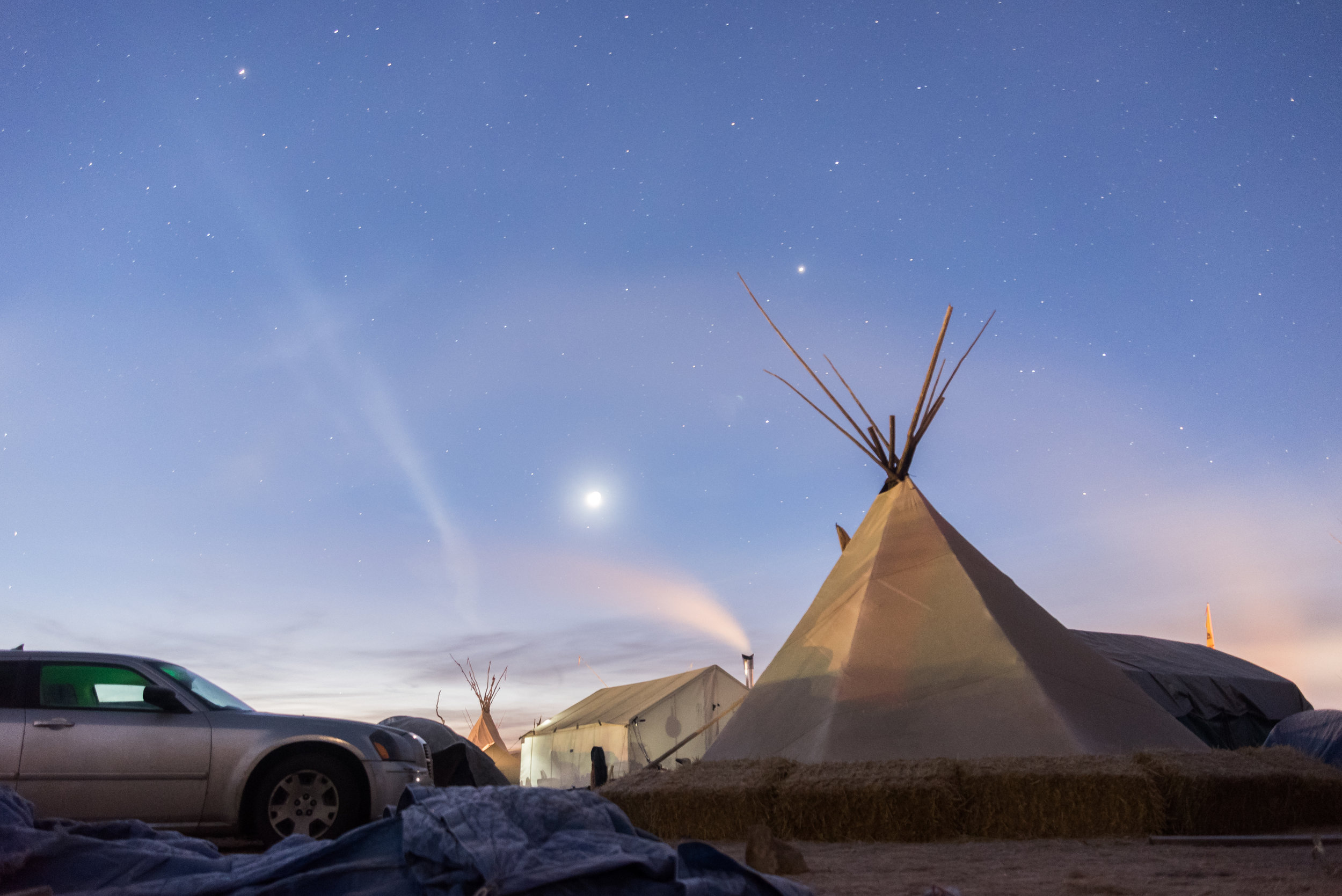Dakota Access Pipeline Protests continue
By Scotty Schenck
Posted Dec. 6, 2016, Last updated: Dec. 6, 2016
In Cannon Ball, North Dakota, water protectors gather to Oceti Sakowin, a camp set up to protest against the construction of the Dakota Access Pipeline, a 1,175-mile-long pipeline project with an estimated $3.8 billion price-tag. The Standing Rock Sioux tribe says that the pipeline not only threatens their water supply, but also sacred tribal land and burial grounds near Lake Oahe, which the pipeline was scheduled to run under. The camp is set up on federal land, which was originally given to Native Americans in the area under the 1851 Fort Lamarie Treaty.
On Thanksgiving Day, water protectors demonstrated at both Backwater Bridge, north of the camp, which has been blockaded by law enforcement and at Turtle Island. Turtle Island is one of the lands the pipeline was supposed to run through, which the Standing Rock Sioux said is a sacred burial ground.
Later in the week, the Army Corps of Engineers said in a statement it was closing the land to the public and would subject anyone on it to federal, state and local laws for trespassing; however, they would not personally forcibly remove them from the land. Additionally, the governor of North Dakota issued an emergency evacuation of the area citing fears for safety from wintry conditions, restricting emergency services to people in the area. Emergency officials said they would respond to crisis in the area, regardless of the governor's decision, saying "we aren't going to let someone out there freeze."
The Army Corp of Engineers rescinded easement to Energy Transfer Partners on Sunday, Dec. 4 and will be issuing a full Environmental Impact Statement with full "public input and analysis."
